Behavior:Win32/Rugmigen.B Malware
Behavior:Win32/Rugmigen.B is a harmful type of malware that pretends to be an Adobe Reader setup file. It mainly targets already compromised computers, installing other malicious programs. As a loader, this malware sneaks into a system, opens a secret entry point, and brings in additional threats.
Currently, numerous harmful applications are being used to distribute Behavior:Win32/Rugmigen.B, putting users at risk, especially those who download software from unknown sources. Torrent sites and freeware platforms pose high infection risks, particularly for users who don’t verify their downloads.
Hackers also spread this malware through phishing emails. These emails carry deceptive attachments that, when opened, install the trojan silently.
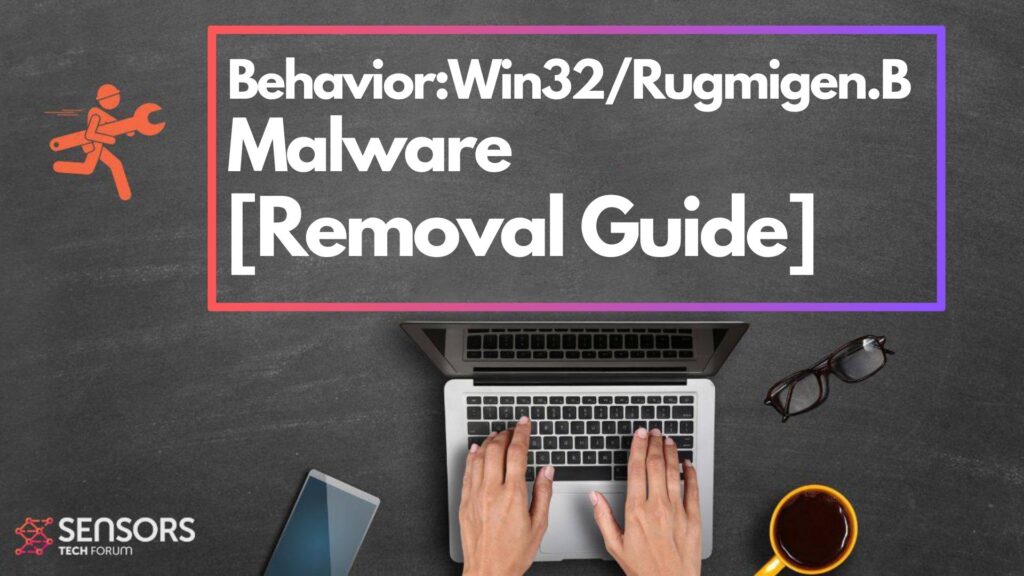
Behavior:Win32/Rugmigen.B Summary
| Name | Behavior:Win32/Rugmigen.B |
| Type | Trojan Horse / Malware |
| Brief Description | Fake setup malware that can perform various malicious activities on the system. |
| Symptoms | Your computer could become very slow and even freeze from time to time; excessive CPU usage is also possible. |
| Distribution Technique | Bundled downloads. Web pages which may promote it. |
| Detection Tool |
See if the System is impacted by Behavior:Win32/Rugmigen.B
Down Load
Malware Removal Tool
|
Behavior:Win32/Rugmigen.B Loader – Why Is It on My System?
If your system warns you about Behavior:Win32/Rugmigen.B Loader, it means the infection has already occurred. This malware acts as a gateway for additional threats. It often disguises itself as a trusted program, tricking users into installing it while downloading or updating software.
Many infections happen when people install software from unreliable sources, use pirated programs, or click on misleading ads. Since it hides within other programs, users may not notice it until they experience system lag, excessive pop-ups, or strange system behavior.
Key Features and Risks of Behavior:Win32/Rugmigen.B Malware
Spreading Harmful Programs
Behavior:Win32/Rugmigen.B functions as a carrier for different cyber threats such as spyware, keyloggers, and ransomware. It exploits security loopholes to install additional malware in the background without the user’s knowledge. It spreads via phishing emails, malicious attachments, fake websites, and unsecured software downloads.
System Vulnerabilities
This malware takes advantage of system flaws to stay hidden and maintain access. It modifies system settings, alters registry entries, and uses sophisticated techniques to evade detection by security software. Because it operates quietly, it often remains undetected for extended periods, enabling hackers to misuse the system.
Stealing Personal Data
Behavior:Win32/Rugmigen.B is highly dangerous because it can collect private user data. It captures login credentials, bank details, stored passwords, and even records keystrokes.
Hackers exploit this data to access accounts, commit fraud, or sell it on illegal online marketplaces. Most victims only realize the attack when they notice unauthorized transactions or security warnings.
Remote Control by Hackers
This malware connects to an external command-and-control server, allowing attackers to execute commands remotely. They can install additional malware, send harmful instructions, or even take over system functions. Infected computers might also be used in cyberattacks without the owner’s awareness.
Persistence and Concealment
Behavior:Win32/Rugmigen.B is designed to stay active and resist deletion. It uses advanced methods like encryption and system modifications to hide its presence. Even if users attempt to remove it manually, it can reinstall itself using concealed processes or tampered system files.
How to Remove Behavior:Win32/Rugmigen.B Malware
If your device is infected, take action immediately to prevent data loss and further damage. This malware is difficult to remove manually, so follow these steps for effective removal:
1. Disconnect from the Internet – This stops communication with hacker-controlled servers and prevents further damage.
2. Use a Reliable Anti-Malware Tool – Perform a full system scan with a trusted security program to detect and eliminate threats.
3. Boot Into Safe Mode – Restarting in Safe Mode can help disable malicious processes.
4. Check Installed Programs – Remove unfamiliar software, especially those installed before the infection was noticed.
5. Reset Your Browser – Restoring browser settings can eliminate unwanted changes made by the malware.
6. Update Your System – Keeping your system up to date helps patch security flaws and prevents reinfection.
Following these steps and being cautious with software downloads can help you avoid future infections. Cybercriminals constantly change their methods, so staying aware and using strong security measures is key to keeping your system safe.
Preparation before removing Behavior:Win32/Rugmigen.B.
Before starting the actual removal process, we recommend that you do the following preparation steps.
- Make sure you have these instructions always open and in front of your eyes.
- Do a backup of all of your files, even if they could be damaged. You should back up your data with a cloud backup solution and insure your files against any type of loss, even from the most severe threats.
- Be patient as this could take a while.
- Scan for Malware
- Fix Registries
- Remove Virus Files
Step 1: Scan for Behavior:Win32/Rugmigen.B with SpyHunter Anti-Malware Tool
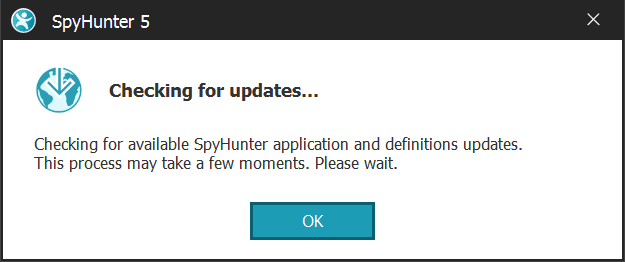
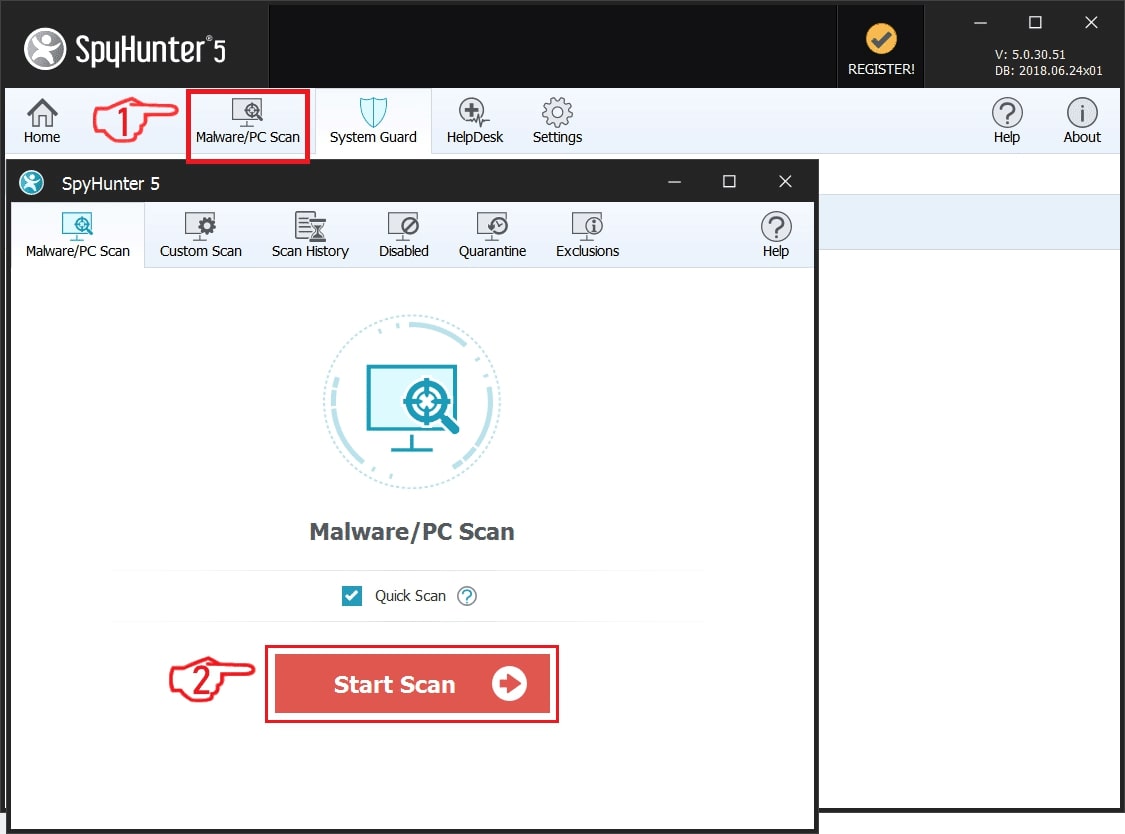
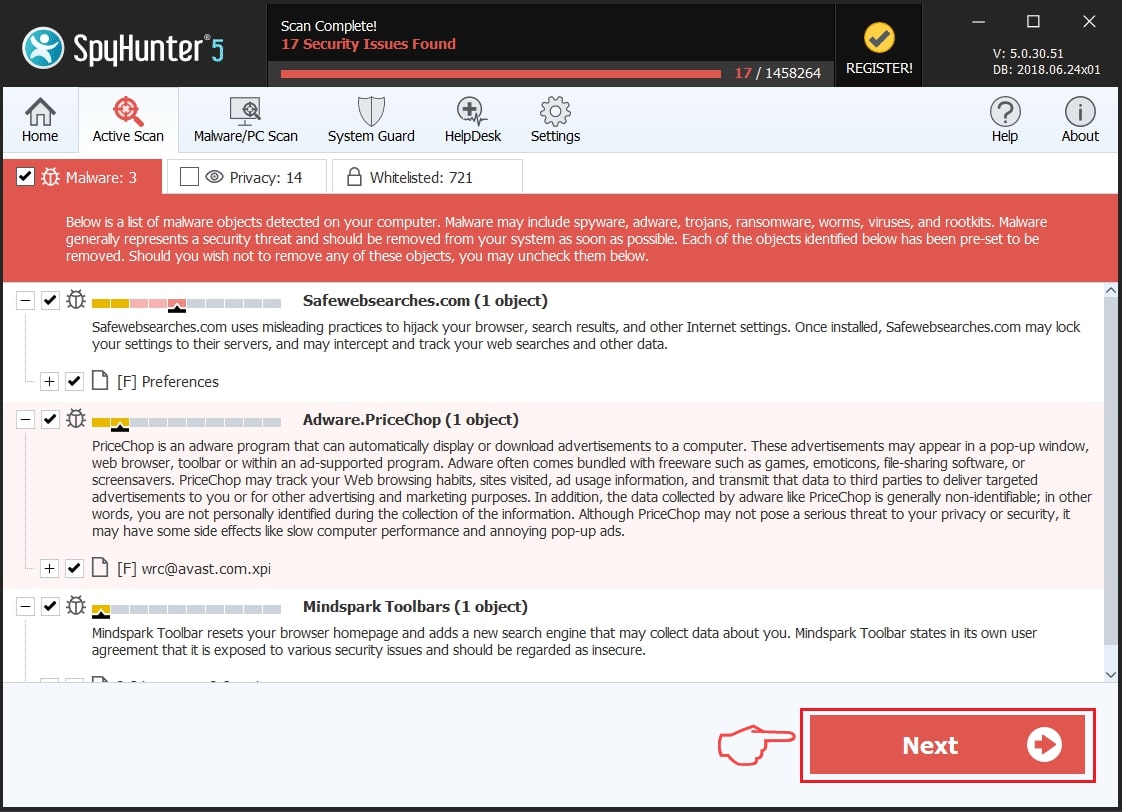
Step 2: Clean any registries, created by Behavior:Win32/Rugmigen.B on your computer.
The usually targeted registries of Windows machines are the following:
- HKEY_LOCAL_MACHINE\Software\Microsoft\Windows\CurrentVersion\Run
- HKEY_CURRENT_USER\Software\Microsoft\Windows\CurrentVersion\Run
- HKEY_LOCAL_MACHINE\Software\Microsoft\Windows\CurrentVersion\RunOnce
- HKEY_CURRENT_USER\Software\Microsoft\Windows\CurrentVersion\RunOnce
You can access them by opening the Windows registry editor and deleting any values, created by Behavior:Win32/Rugmigen.B there. This can happen by following the steps underneath:
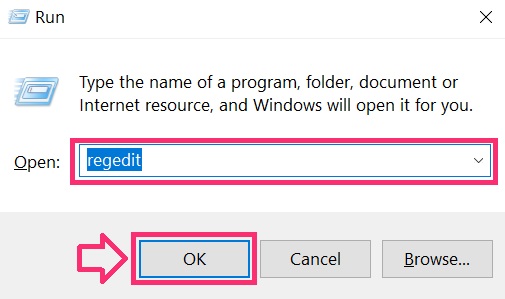

 Tip: To find a virus-created value, you can right-click on it and click "Modify" to see which file it is set to run. If this is the virus file location, remove the value.
Tip: To find a virus-created value, you can right-click on it and click "Modify" to see which file it is set to run. If this is the virus file location, remove the value.Step 3: Find virus files created by Behavior:Win32/Rugmigen.B on your PC.
1.For Windows 8, 8.1 and 10.
For Newer Windows Operating Systems
1: On your keyboard press + R and write explorer.exe in the Run text box and then click on the Ok button.
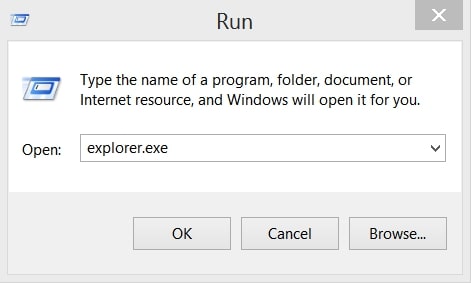
2: Click on your PC from the quick access bar. This is usually an icon with a monitor and its name is either “My Computer”, “My PC” or “This PC” or whatever you have named it.
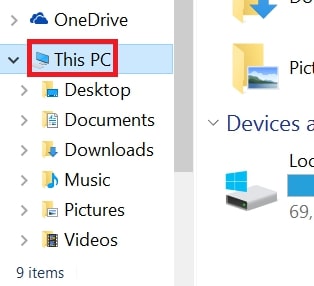
3: Navigate to the search box in the top-right of your PC's screen and type “fileextension:” and after which type the file extension. If you are looking for malicious executables, an example may be "fileextension:exe". After doing that, leave a space and type the file name you believe the malware has created. Here is how it may appear if your file has been found:
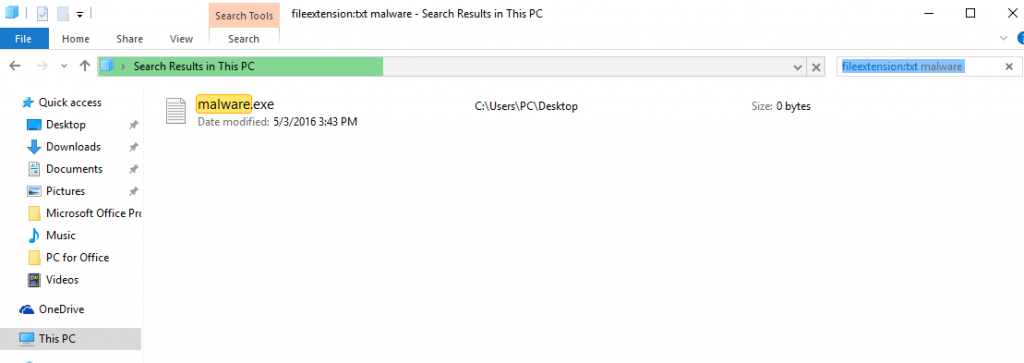
N.B. We recommend to wait for the green loading bar in the navigation box to fill up in case the PC is looking for the file and hasn't found it yet.
2.For Windows XP, Vista, and 7.
For Older Windows Operating Systems
In older Windows OS's the conventional approach should be the effective one:
1: Click on the Start Menu icon (usually on your bottom-left) and then choose the Search preference.
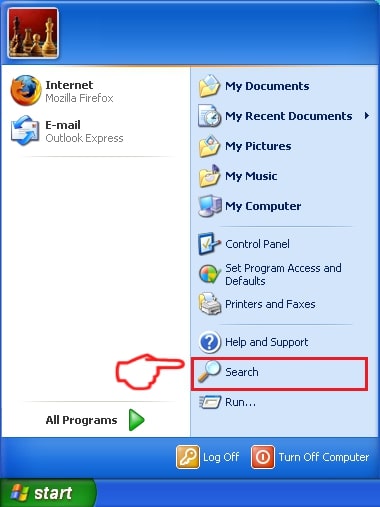
2: After the search window appears, choose More Advanced Options from the search assistant box. Another way is by clicking on All Files and Folders.
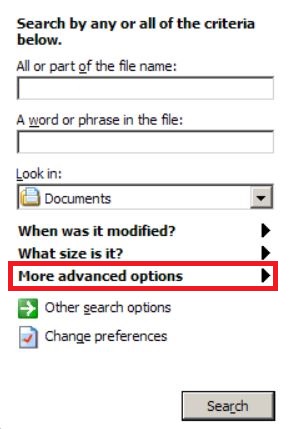
3: After that type the name of the file you are looking for and click on the Search button. This might take some time after which results will appear. If you have found the malicious file, you may copy or open its location by right-clicking on it.
Now you should be able to discover any file on Windows as long as it is on your hard drive and is not concealed via special software.
Behavior:Win32/Rugmigen.B FAQ
What Does Behavior:Win32/Rugmigen.B Trojan Do?
The Behavior:Win32/Rugmigen.B Trojan is a malicious computer program designed to disrupt, damage, or gain unauthorized access to a computer system. It can be used to steal sensitive data, gain control over a system, or launch other malicious activities.
Can Trojans Steal Passwords?
Yes, Trojans, like Behavior:Win32/Rugmigen.B, can steal passwords. These malicious programs are designed to gain access to a user's computer, spy on victims and steal sensitive information such as banking details and passwords.
Can Behavior:Win32/Rugmigen.B Trojan Hide Itself?
Yes, it can. A Trojan can use various techniques to mask itself, including rootkits, encryption, and obfuscation, to hide from security scanners and evade detection.
Can a Trojan be Removed by Factory Reset?
Yes, a Trojan can be removed by factory resetting your device. This is because it will restore the device to its original state, eliminating any malicious software that may have been installed. Bear in mind that there are more sophisticated Trojans that leave backdoors and reinfect even after a factory reset.
Can Behavior:Win32/Rugmigen.B Trojan Infect WiFi?
Yes, it is possible for a Trojan to infect WiFi networks. When a user connects to the infected network, the Trojan can spread to other connected devices and can access sensitive information on the network.
Can Trojans Be Deleted?
Yes, Trojans can be deleted. This is typically done by running a powerful anti-virus or anti-malware program that is designed to detect and remove malicious files. In some cases, manual deletion of the Trojan may also be necessary.
Can Trojans Steal Files?
Yes, Trojans can steal files if they are installed on a computer. This is done by allowing the malware author or user to gain access to the computer and then steal the files stored on it.
Which Anti-Malware Can Remove Trojans?
Anti-malware programs such as SpyHunter are capable of scanning for and removing Trojans from your computer. It is important to keep your anti-malware up to date and regularly scan your system for any malicious software.
Can Trojans Infect USB?
Yes, Trojans can infect USB devices. USB Trojans typically spread through malicious files downloaded from the internet or shared via email, allowing the hacker to gain access to a user's confidential data.
About the Behavior:Win32/Rugmigen.B Research
The content we publish on SensorsTechForum.com, this Behavior:Win32/Rugmigen.B how-to removal guide included, is the outcome of extensive research, hard work and our team’s devotion to help you remove the specific trojan problem.
How did we conduct the research on Behavior:Win32/Rugmigen.B?
Please note that our research is based on an independent investigation. We are in contact with independent security researchers, thanks to which we receive daily updates on the latest malware definitions, including the various types of trojans (backdoor, downloader, infostealer, ransom, etc.)
Furthermore, the research behind the Behavior:Win32/Rugmigen.B threat is backed with VirusTotal.
To better understand the threat posed by trojans, please refer to the following articles which provide knowledgeable details.

